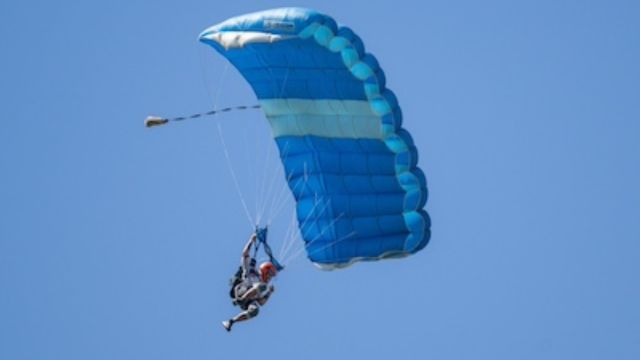On an idyllic Saturday morning in August 2016, the skies above California’s renowned Big Sur coastline were clear, setting a picturesque backdrop for an adventure that was tinged with anticipation and excitement.
Francine Turner, alongside her son Tyler, 18, and his two closest friends, ventured to the Lodi Parachute Center, a popular skydiving hub situated just off Highway 99, north of Stockton. This outing was intended to celebrate their recent high school graduation, marking the transition with an adrenaline-fueled leap before they all headed to UC Merced for college in the fall.
The decision to skydive was made in a spirit of youthful exuberance, despite playful banter the day before about the potential risks involved. Upon arrival, Francine observed the pre-jump process, which appeared to be hastily managed.
The boys were simultaneously shown a safety video and given safety waivers to sign, a setup that Francine felt compromised their ability to fully engage with either crucial safety step. This rushed induction into skydiving, described as lackadaisical by Francine, did little to reassure her about the safety of what was to come.
For their skydiving experience, Tyler and his friends were signed up for tandem jumps, where they would be attached to experienced skydivers, essentially hitching a ride through the sky. Tyler was paired with Yong Kwon, a 25-year-old skydiver from South Korea who had arrived in the United States just two months prior and spoke limited English.
After investing in a videographer to capture the moment, Francine bid farewell to her son with a hug and an “I love you.” Tyler, in a moment of reflection, knelt and said a prayer on the runway, marking the last time Francine would see her son alive. Tragically, shortly after their jump, it was revealed that Tyler and Kwon’s main and reserve parachutes had entangled, preventing them from opening. This led to a fatal impact in a nearby vineyard, ending both of their lives.
This incident was not an isolated occurrence at the Lodi Parachute Center, which, as investigations by the Sacramento Bee revealed, had been associated with a total of 28 deaths since 1985. The frequency of these fatalities has raised significant concerns about the safety protocols and regulatory oversight at the center.
Despite the tragic outcomes associated with the center, operations continued unabated, a decision that left Francine and others directly impacted by these events both bewildered and enraged. The center’s then-owner, Bill Dause, defended the continuation of jumps, stating that “life goes on,” a sentiment that offered little comfort to those grieving.
The regulatory landscape for skydiving, as highlighted by this case, presents challenges in oversight and accountability. The FAA’s limited role in investigating skydiving accidents, focusing primarily on equipment rather than causative factors, underscores a broader issue of safety in the sport. Meanwhile, self-regulation within the industry, largely managed by private associations such as the United States Parachute Association (USPA), has been criticized for insufficiently addressing safety concerns.
In response to the systemic issues laid bare by tragedies like Tyler’s, legislative efforts, including the introduction of Tyler’s Law, sought to impose stricter regulations on skydiving instructors and operators. However, the persistence of accidents and fatalities calls for a renewed focus on enhancing safety standards and regulatory oversight in the skydiving community.
The story of that fateful day in August, and the subsequent revelations about the Lodi Parachute Center, serves as a potent reminder of the paramount importance of safety in adventure sports. It underscores the need for stringent safety protocols, thorough regulatory oversight, and a culture of accountability to protect those who seek the thrill of the sky, ensuring their adventures end in joy rather than tragedy.

